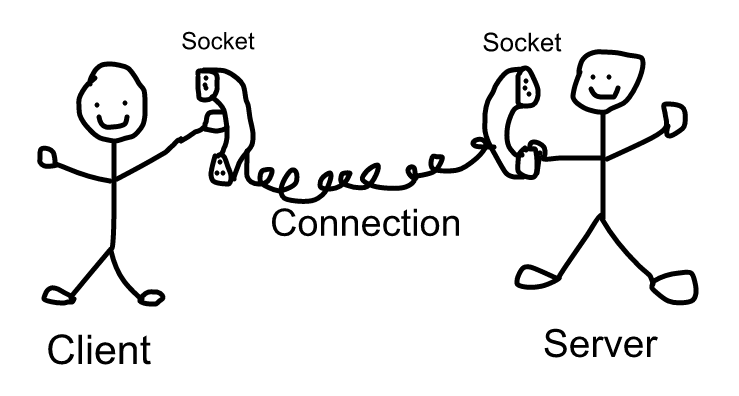HTTP Server in Go
Last week, I started my batch at Recurse Center! For my first project, I implemented an HTTP server using sockets.
What is an HTTP server?
HTTP (aka HyperText Transfer Protocol) is how the internet is able to show us stuff! It’s an application layer protocol that specifies a set of rules for how requests and responses should be formatted so that web clients and web servers can communicate. A server is a piece of software that takes an HTTP request from a client and returns an HTTP response to that requesting client (which is often a web browser). But this definition feels pretty vague to me. How does the request actually get to and from this software? And what is this software actually doing?
Sockets & Connections
Sockets are how clients and servers are able to communicate! In the context of this post, we’ll only be talking about TCP connections. A socket is a combination of an IP address and a port so the TCP layer can identify where the data should be sent. Both the client and the server need to create a socket in order to form a connection that can transport data back and forth.
You can think of sockets as old school telephones and a connection as the cord between them.

Let's check out this simple server implementation.
package main
import (
"bufio"
"fmt"
"net"
)
func handleConnection(conn net.Conn) {
defer conn.Close()
scanner := bufio.NewScanner(conn)
scanner.Scan()
// This grabs the first line of the request
requestStr := scanner.Text()
var headers string
var body []byte
headers = "HTTP/1.1 200 OK\r\n\r\n"
body = []byte("Hello, World!")
// Write response to connection
conn.Write([]byte(headers))
conn.Write(body)
}
func main() {
l, err := net.Listen("tcp", ":8888")
if err != nil {
fmt.Println(err)
}
defer l.Close()
fmt.Println("Listening at :8888...")
for {
// Wait for a connection.
conn, err := l.Accept()
if err != nil {
fmt.Println(err)
}
// Handle the connection in a new goroutine.
// The loop then returns to accepting, so that
// multiple connections may be served concurrently.
go handleConnection(conn)
}
}The main function creates a TCP socket at localhost:8080 and begins waiting for a connection.
Once the server-side socket receives a connection the function handleConnection deals with the connection in a new thread. This is so multiple users may request data from the server at one time. handleConnection reads the HTTP request from the connection and returns an HTTP response. In this case, it just reads the first line of the HTTP request (ex. GET / HTTP/1.1) and automatically returns a successful HTTP response by writing to the connection.
Remember the socket/connection phone analogy? A handler is like calling your friend to ask a question like "Where do you want to get dinner?" And your friend thinks for a second processing your questions - possibly thinking through potential dinner options

Then she returns an answer!

So the handler function takes an HTTP request from the connection, processes it, and returns an HTTP response back to the connection!
This is how we’re able to see webpages, which I think is pretty cool.
I went on to abstract this further so you can easily add routes to your server, but this was my main takeaway! You can check out my project on Github.